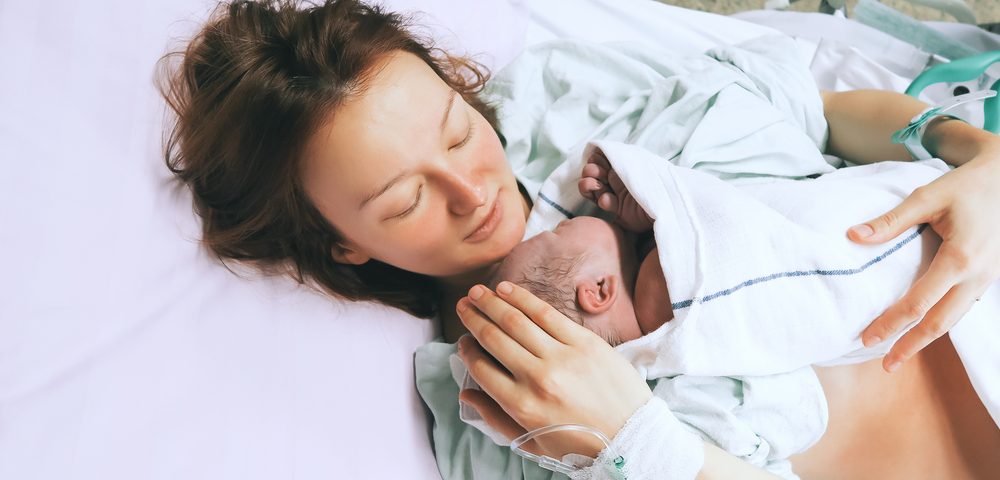A new tool appears to be more accurate than commonly used indexes for predicting the likelihood of successfully giving birth for women with endometriosis who undergo surgery followed by assisted reproduction (ART).
This model could be useful for counseling couples on the best fertility strategy to follow, including whether egg donation should be considered.
“Predicting the likelihood of a live birth for women with endometriosis-related infertility,” the study detailing this tool, was published in the European Journal of Obstetrics & Gynecology and Reproductive Biology.
Endometriosis — in which womb cells develop elsewhere in the body — is estimated to affect 10% of women of reproductive age. Two of its main symptoms are pain and infertility. The exact link between the disease and infertility is not well-understood, but treatments are available to help manage the condition.
The first therapeutic option usually is a laparoscopy, a surgical procedure during which the surgeon removes endometrial lesions. Studies have shown improved pregnancy rates following this type of surgery, but the success rate is not clear.
If pregnancy does not occur, assisted reproductive techniques (ART) such as in vitro fertilization (IVF), usually are recommended.
Laparoscopy and ART both can be done, the researchers said, noting that a significant proportion of women with endometriosis-related infertility choose to undergo surgery “not to increase their chances of pregnancy, but to improve their quality of life.”
What should and can be done to improve the chances of pregnancy in women who undergo both processes is still being debated.
Several tools have been created to assist both patients and physicians in making treatment decisions, but these guides still have many limitations.
Seeking to address this problem, the researchers now created a nomogram — an alignment chart for predicting values — to better estimate the likelihood of a live birth among women with endometriosis-related infertility who underwent surgery followed by ART.
To create the tool, the team used data from 297 women with endometriosis who attempted to conceive by ART — specifically, intra-cytoplasmic sperm injection-in vitro fertilization, or ICSI-IVF — following surgery. The women were treated between 2004 and 2016 at the Jean Verdier University Hospital in France.
Of the 297 women included in the study, 218 had a pregnancy (73.4%) and 171 (57.6%) had a live birth.
The predictive model took into account clinical, biological, and surgical characteristics — namely the age, duration of infertility, number of ICSI-IVF cycles, and ovarian reserve (the capacity of the ovary to provide egg). The model also incorporated the revised American Fertility Society (rAFS) score, the most widely used staging system for endometriosis.
To validate how well this model could predict live births, the researchers did both internal and external validations. For external validations, they tested the model in a separate dataset of 106 women with endometriosis who underwent ART after surgery and whose pregnancy outcomes were known.
In that test, the model achieved an area under the curve (AUC) of 0.71 and calibration “was good,” the researchers said. AUC is a measure of how well a model is capable of discriminating the outcome of an observation. The closer AUC values get to 1, the better the predictive power of the model.
The researchers also compared the predictive ability of the new model with the Endometriosis Fertility Index (EFI), the scale normally used in clinical practice to predict spontaneous pregnancy after endometriosis surgery.
The nomogram’s accuracy in predicting live births was 0.77, while the EFI’s accuracy was 0.60. This suggests “that the model is more accurate than the EFI score for predicting LBR [live-birth rate],” the researchers said.
“Another advantage of the nomogram lies in its dynamic nature: the model takes into account the number of ICSI-IVF cycles which influences the LBR and therefore reflects changes in the probability of a live birth during a patient’s ART course,” they added.
The new model could be used in routine practice to facilitate patient counseling, the investigators said. They noted that it might be especially useful for women with a poor prognosis who need to make “a swift, informed decision about their fertility strategy.”
Using this tool also may be helpful for women who must decide whether to consider egg donation, the researchers said. They note that when to introduce oocyte donation is a major topic of debate, as that often is a woman’s last opportunity to conceive.
The nomogram could “be used to inform couples early on about this option which is especially important in view of the long waiting times” that can happen in some countries, the investigators said.

